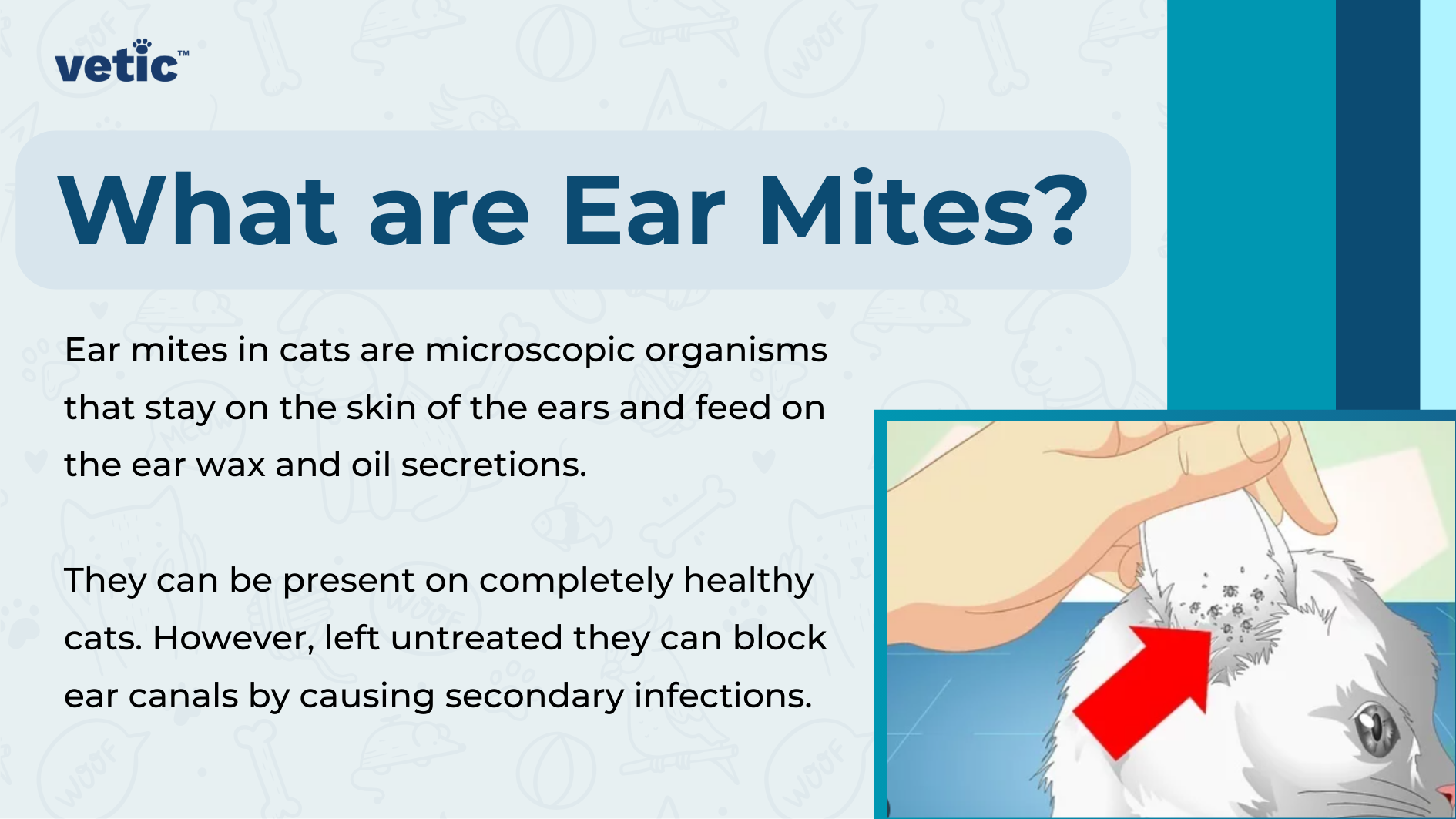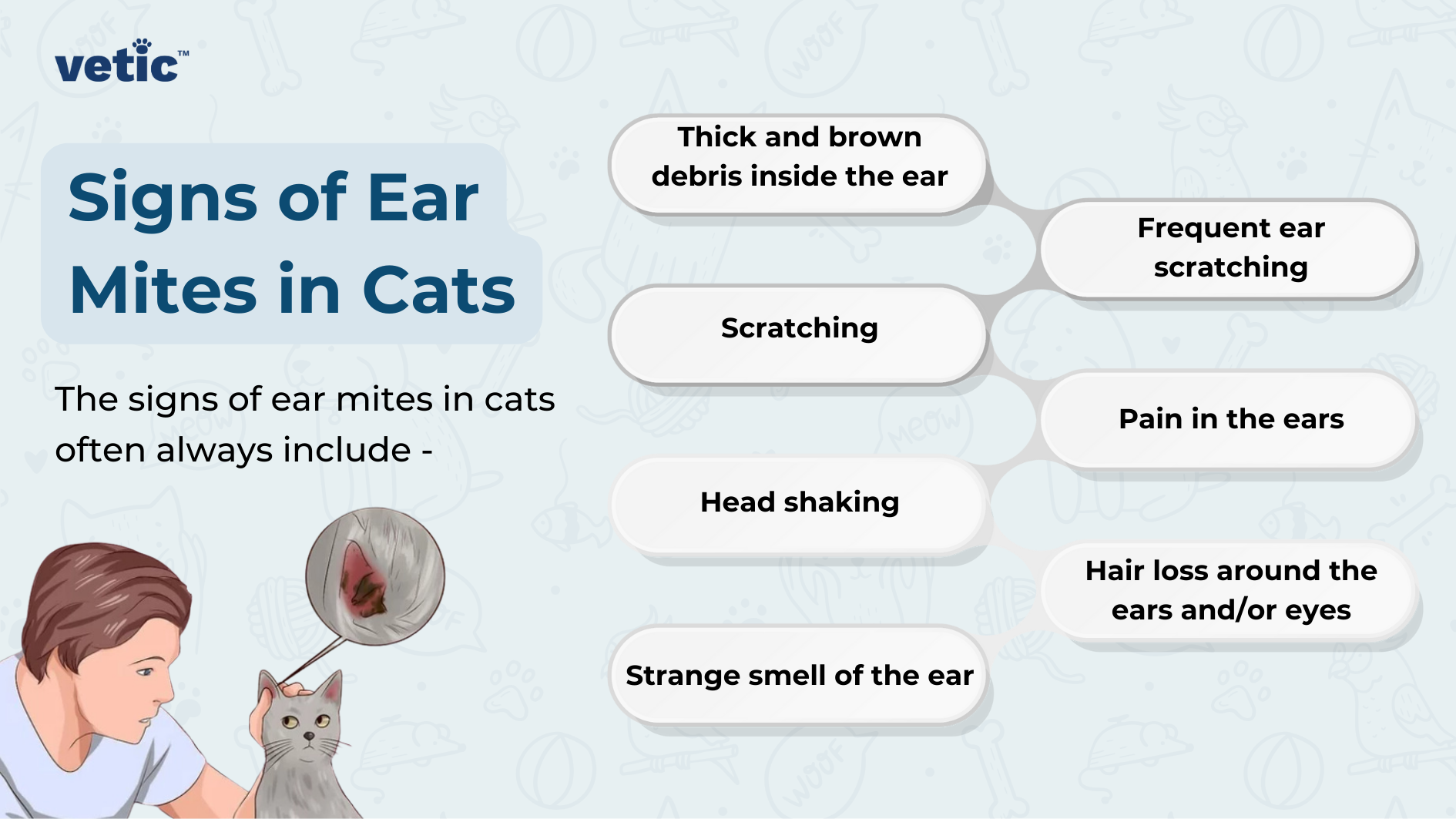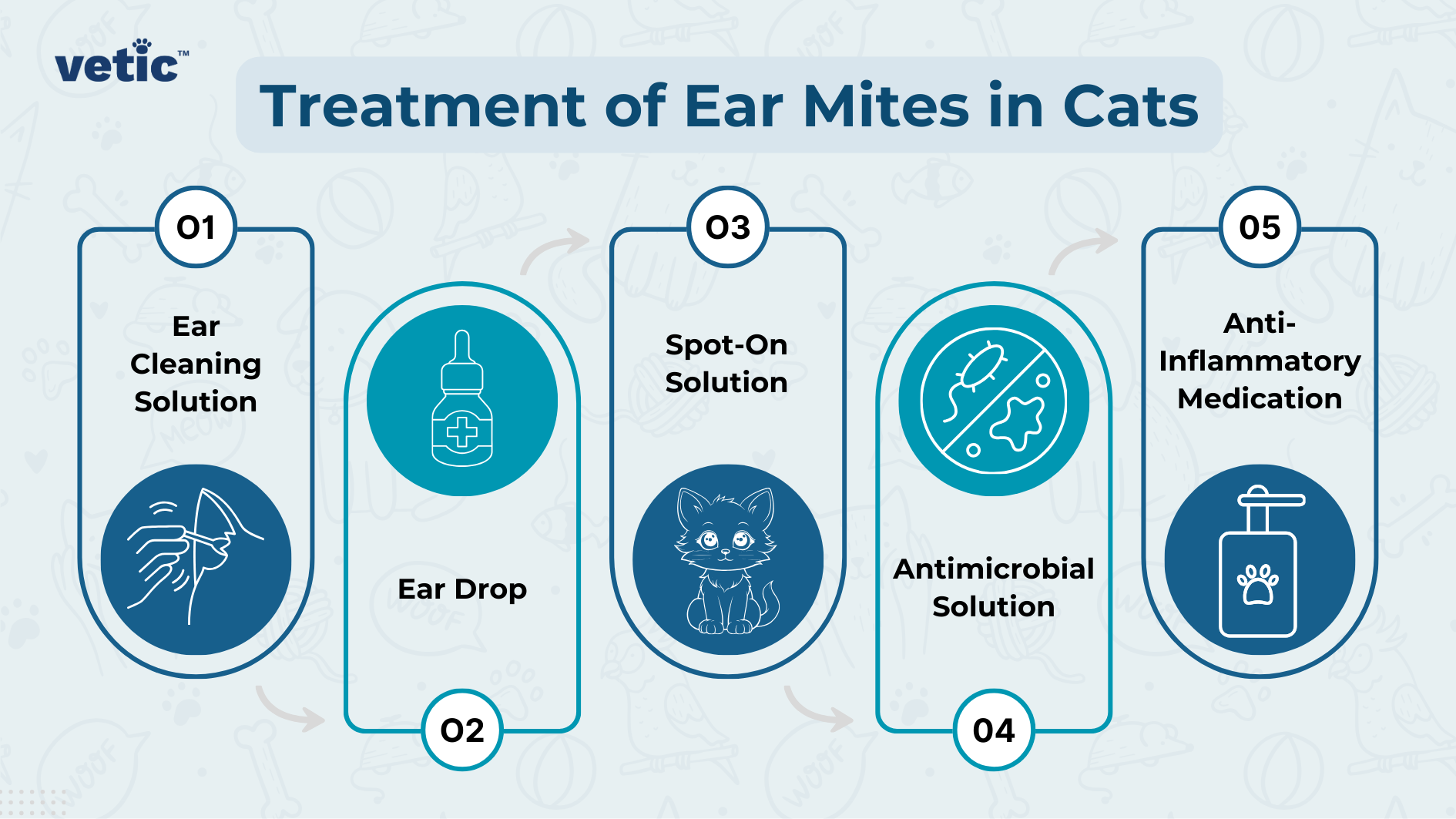Have you ever noticed sticky brown gunk inside your cat’s ears and wondered how it got there? No matter how frequently you clean their ears with pet wipes the brown stuff sneaks back in. Well, we have some good news and some bad news for you. The good news is that we know exactly what it is and how to treat it. The bad news is, you have a case of ear mites in cats in your hands.
Ear mites are very common among all cats irrespective of their age, gender and vaccination status. It is common among indoor cats as well, especially if you have another cat who roams outdoors or a dog. These mites are contagious and they can easily spread between cats and dogs in a multi-animal household.

Nonetheless, without proper mite treatment in cats, they can cause multiple issues including pain, inflammation and secondary bacterial infection inside their ears. The most notable sign of ear mites in cats is the brown stuff that collects inside their ear and the other sign is ear scratching.
What are ear mites in cats?
Ear mites or Otodectes cynotis, are microscopic parasites that live on the skin of the ear canal. Ear mites feed on the ear wax and other oils secreted inside the ear. The brown and black stuff you see inside your cat’s ear is called mite debris, which, in layperson’s terms, is mite poop!
They are found on healthy cats and dogs, but when they multiply in numbers, they can lead to complications including inflammation, oozing, bad smell and bacterial growth.
What are the signs of ear mites in cats?

The signs of ear mites in cats often always include –
- Thick and brown debris inside the ear
- Scratching
- Head shaking
- Strange smell of the ear
- Frequent ear scratching
- Pain in the ears
- Hair loss around the ears and/or eyes
Severe cases of ear mites in cats can cause skin irritation and infection. A seriously affected cat can show sign of lethargy and decreased appetite.
How Do Cats Get Ear Mites?
Ear mites in cats can come from close contact with another infected cat or dog. Ear mites are highly contagious and they can spread quickly among all pets in a multi-pet household.
Kittens most commonly get ear mites from their mothers and/or older siblings.
If your cat has not been given spot-on or other preventive treatments, they can be at a higher risk of developing ear mites. Ear mites are also common among outdoor and indoor-outdoor cats.
How are Ear Mites in Cats Diagnosed?
If your cat has been scratching their ears and head more often than usual, and you see weird brown stuff in their ears, it’s time to see the veterinarian.
Cats with signs of ear mites should first be isolated from other pets. Next, they should be taken to the vet. Here’s what the vet will do –
Thorough physical examination
The veterinarian will check your cat’s ears closely for any sign of mite debris like the brown or black deposit in their ears. They will also check for additional scratches that can lead to inflammation or infection.
Ear mite check
The veterinarian may use a cotton swab to remove the material from the ear of the cats and prepare it for viewing under the microscope. Ear mites and their eggs are easily visible under the microscope.
Check for bacterial infection
The veterinarian will follow a similar procedure to check for bacterial infection as well. This is especially necessary if your cat’s ears are swollen, smelly and painful.
Treatment of Ear Mites in Cats

Treatment for ear mites in cats is quite straightforward and effective. Your veterinarian will likely prescribe an ear cleanser. These ear cleaning solutions can keep your cat’s ears clean by removing the debris produced by ear mites.
Currently, there are two options for the treatment of ear mites in cats –
1. Ear drops
These will be different from the ear cleaning solution prescribed by your veterinarian. These are drops that can kill mites and you need to carefully administer these ear drops as directed by the doctor into the ear canal. Ensure that your cat doesn’t lick the solution. Clean the ears as directed by the veterinarian after the application of the topical drops.
2. Spot-on solutions
Although there are many spot-on solutions available for cats in India not all of them claim to work on ear mites. Most of them can actually prevent and cure ear mites. However, you cannot apply them if your cat has open wounds or a bacterial infection in their ear canal. Only apply a spot-on solution after your veterinarian has checked your cat physically and prescribed one according to your cat’s age and weight.
The veterinarian may also prescribe antimicrobial solutions or an oral antibiotic if your cat has a bacterial infection in their ear canal. For severe infection and inflammation, the veterinarian will prescribe an anti-inflammatory medication.
How to Manage and Prevent Ear Mites in Cats?

Cats can recover quite easily from ear mites after completing one course of topical treatment. You need to follow your veterinarian’s instructions as closely as possible on ear cleaning, home hygiene and follow-up consultations.
The elimination of ear mites in cats can take up to a month. However, you need to ensure that you continue with the preventative measures such as spot-ons to keep mites from coming back on your cat(s).
If you have other pets, you need to visit the veterinarian with them so they can receive the proper mite control and prevention treatments as well.
Are Ear Mites in Cats Contagious?

Ear mites in cats are highly contagious. While ear mites typically do not spread from a cat to a human, it can cause the human to develop small rashes and bumps that resemble allergies.
Ear mites will also spread from an adult cat to a kitten and vice versa. They can spread between animals. So if you have an infected cat, your dog might catch them as well. The best way is to put all your pets on preventive treatment as per your veterinarian’s recommendation.
Do remember, the preventive measures in dogs and cats are entirely different. Never use anti-tick, flea or mite solution or chews meant for your dog in your cat.
FAQs about Ear Mites in Cats:
How long do ear mites live without a host?
Ear mites can live for several weeks without a host, making reinfestation possible if not properly managed.
Can ear mites cause long-term damage in cats?
If untreated, ear mites can cause chronic ear infections and potential hearing loss in cats.
Are ear mites visible to the naked eye?
Ear mites are microscopic and cannot be seen without a microscope, but their debris is visible.
How quickly do ear mites reproduce?
Ear mites reproduce rapidly, with a lifecycle from egg to adult in about three weeks.
Can ear mites be prevented in cats?
Yes, regular use of vet-prescribed spot-on treatments and maintaining cleanliness can prevent ear mites.
Do ear mites only affect the ears of cats?
Primarily, but severe infestations can spread to the head and neck, causing additional irritation.
Is it necessary to treat all pets in the household if one has ear mites?
Yes, all pets should be treated to prevent reinfestation and spread of the mites.

